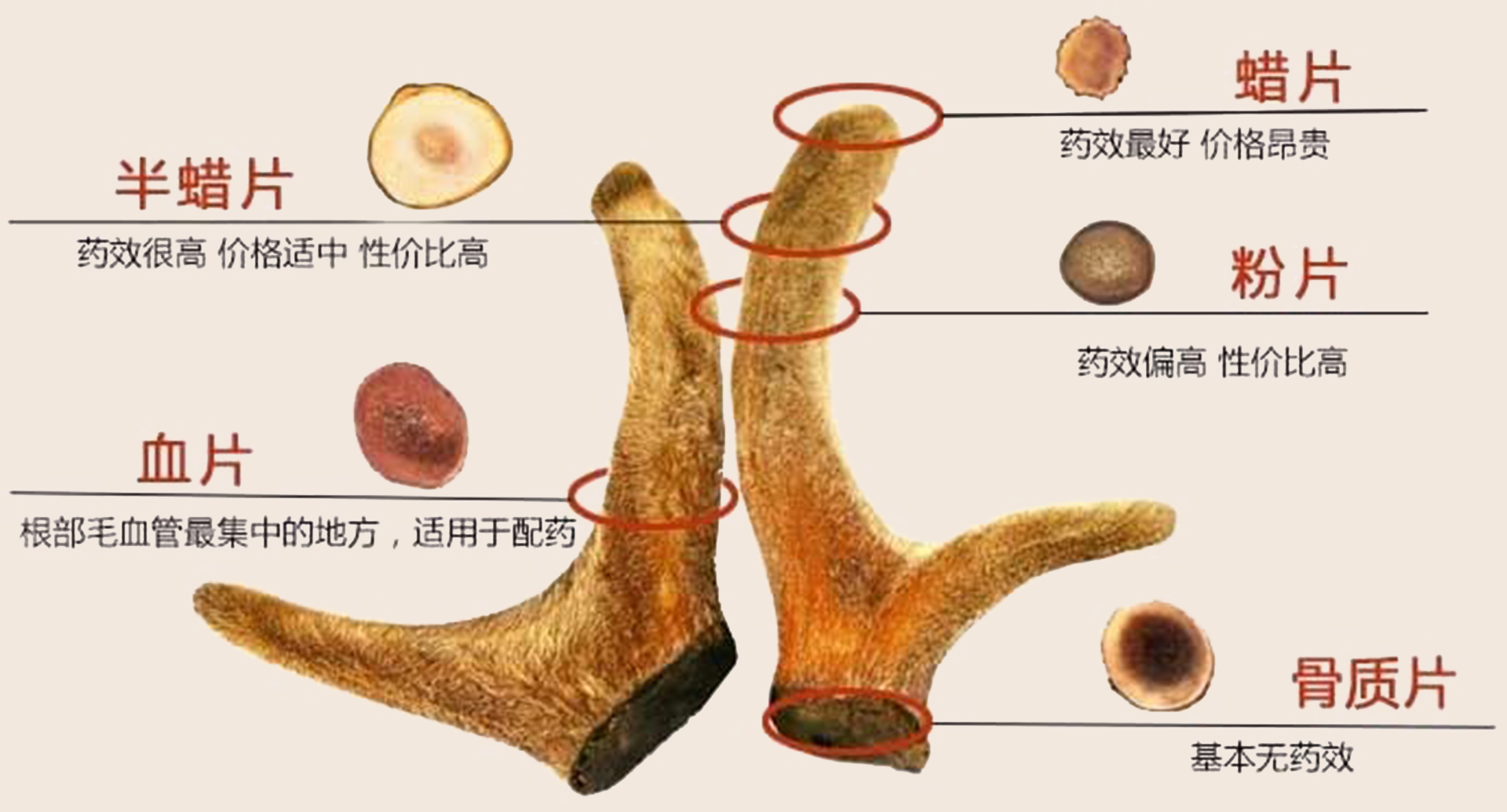Deer antler velvet is the term used to describe the soft, cartilaginous growth stage of the antlers of male deer or elk, including red deer or sika deer. It refers to the antler before it has fully calcified into hard bone. Each year, deer antlers can grow and regenerate once. After the antlers have fully grown, which takes about two to three months, they can be harvested. If not harvested in a timely manner, the antler will age and eventually calcify into a hard horn. During this process, the proteins and collagen in the antler gradually diminish. As a result, the blood-nourishing and beauty-enhancing effects are significantly reduced. Once the antler has fully calcified and hardened into a deer horn, it will naturally shed off.

The production of deer antler slices is indeed a complex process that requires a high level of skill. After harvesting the deer antler, the velvet is singed to remove the hair and then carefully scraped to clean it. Hot white wine is continuously infused into the small holes in the antler. After a brief steaming, the antler is sliced thinly and then dried to create the antler slices. Deer antler slices are further categorized based on different parts of the antler. Among them, the top most part is considered to have the highest quality and medicinal value, and only a few slices can be obtained from each antler, making them relatively more valuable. On the other hand, deer antler slices closer to the base of the antler have a higher proportion of bone, resulting in relatively lower effectiveness and medicinal value.

Warm

Liver

Kidney

Sweet

Salty
Modern scientific research has shown that deer antler velvet contains estrone, lecithin, and over 15 different amino acids, as well as various trace elements. It is believed to have several main effects, including enhancing vitality, improving sexual function, regulating menopause, and promoting overall physical well-being.
| . | Strengthen yang energy During winter, it is common for ladies to experience cold hands and feet, primarily due to weak yang energy. Deer antler velvet has the effect of strengthening yang energy and replenishing essence. It can be beneficial for gynecological conditions such as uterine coldness, irregular menstruation, abnormal vaginal discharge, postpartum anemia, and infertility caused by uterine coldness.
|
| . | Enhance Sexual Function Deer antler velvet extract has been found to increase plasma testosterone levels and enhance the production of luteinizing hormone (LH), which can contribute to improved sexual function and performance in the body.
|
| . | Managing Menopause Indeed, sex hormones also have a role in regulating the balance of the endocrine system, and deer antler velvet extract may have an impact on this regulation. This can be particularly beneficial in treating menopausal symptoms in women.
|
| . | Strengthening Effect Deer antler velvet is believed to stimulate adrenal cortex function and promote the secretion of adrenaline. This can enhance the body's resistance to fatigue and cold, as well as potentially accelerate wound healing.
|
There are over 40 species of deer worldwide, whereas Sika deer is primarily produced in New Zealand, Jilin and Liaoning provinces in China.

The Sika deer is not highly social, and male deer often live solitary lives. They are most active during the early morning and evening hours. Their habitat and range can vary with the changing seasons. In the spring, they are often found on partially shaded slopes, while in the summer and autumn, they move to the forest edges of shaded slopes. During winter, they prefer warm sunny slopes. The Sika deer's diet primarily consists of grass, fruits, herbs, tree buds, leaves, and agricultural crops.
Deer antler velvet must be harvested when it is in the early stage of growth and has a waxy texture. Once it has fully grown and hardened into deer antlers, its medicinal value significantly decreases. Prior to harvesting deer antler velvet, the harvesters must constantly observe the growth and maturity of the velvet. Based on factors such as the age of the deer and the specific characteristics of the antler growth, the appropriate harvesting date for each deer is determined.
The male deer starts growing antler velvet from their third year and can be harvested 1-2 times per year. The harvesting process involves chasing the deer into a holding rack to ensure blood flow to the antler velvet. The deer's limbs are then bound with ropes, and its head is fixed using a tripod. A sterilized tourniquet is tied around the base of the velvet, and a saw is used to remove the antler velvet. The cut area is then treated with ferric chloride to stop bleeding. The harvested antler velvet needs to be processed immediately, and the process is quite involved. It undergoes repeated boiling in hot water to remove blood and achieve a semi-dry state. Next, the velvet is exposed to fire to remove the velvet hair. It is then soaked in alcohol to soften the antler velvet and sliced with a knife. Specialized pressure devices are used to flatten and dry the slices. Finally, the processed antler velvet is packaged separately according to different grades.
Among deer antler products, the velvet from the roe deer is considered the most precious and highly valued.

Grade 1 Deer Antler Slices
Wax Slices are the top and most tender part of deer antler. They can be further categorized into full wax slices and half-wax slices. Wax slices have a higher wax content and are typically less powdery or devoid of powder. Only 2-3 full wax slices can be cut from a whole piece of deer antler. Grade 1 wax slices are commonly consumed at a dosage of 1 gram per serving and are often used to tonify kidney yang.
Grade 2 Deer Antler Slices
The Powder Slices refer to the upper section of the whole deer antler. They have a crispy texture, fine pores on the surface.
Grade 3 Deer Antler Slices
The Blood slices have larger pores on the surface compared to the powder slices and exhibit a reddish color.
Grade 4 Deer Antler Slices
The Bone Slices are calcified deer antler slices located at the bottom of the whole deer antler. In terms of nutritional value, they are considered inferior to the Blood Slices.















